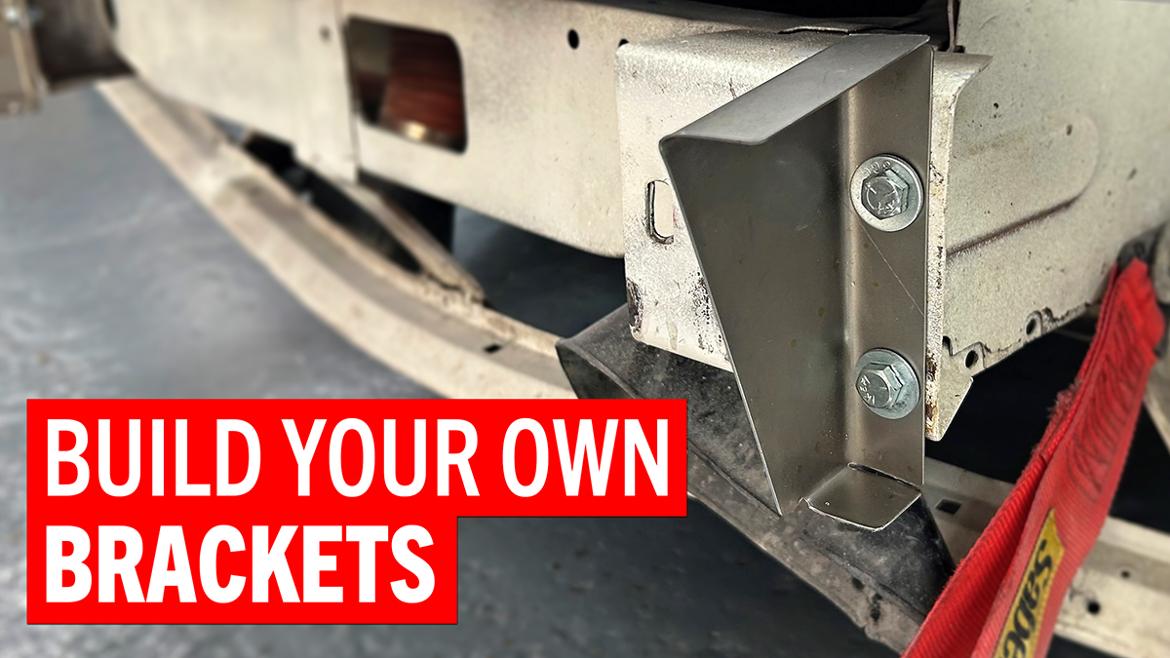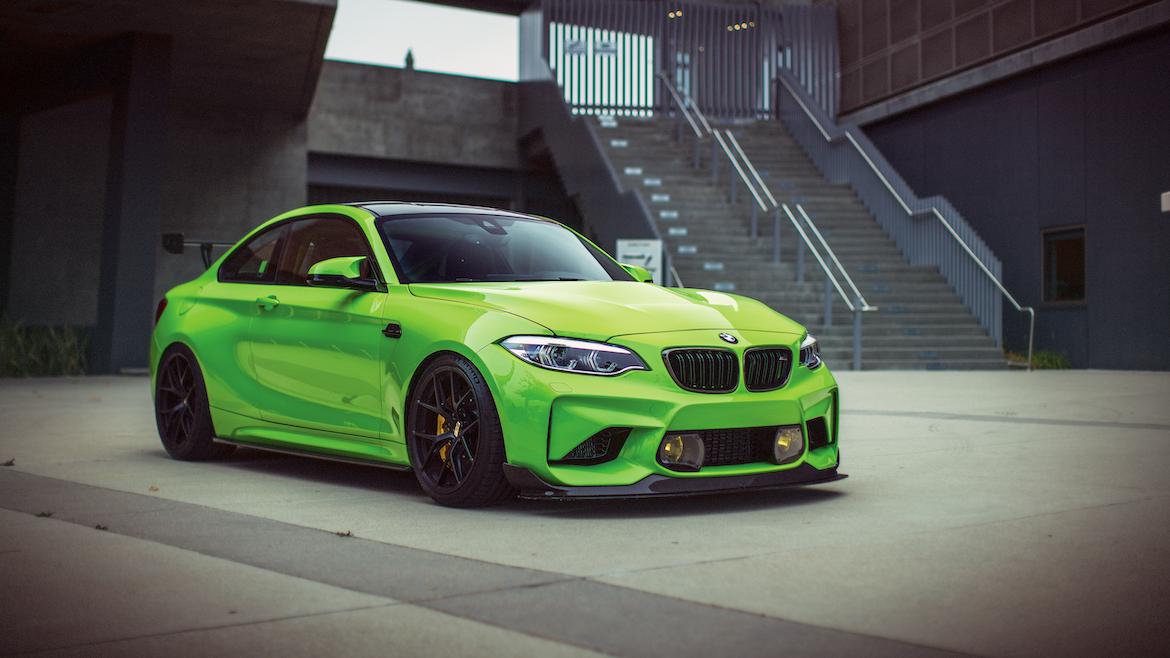Of course you have. A quick shot in the driveway, in front of a lake, behind your shop–everybody’s done it. But how do pros take those dramatic photos you see in magazines like this one?
Mike Burroughs is one of the top automotive photographers on the West Coast. Besides shooting for clients like Rolls-Royce, he and some equally talented colleagues post a lot of their photos, along with corresponding stories about the cars, on StanceWorks, a website that Burroughs founded. StanceWorks (stanceworks.com) is full of great shots, from the dark and moody to the bright and charismatic.
How did he get started?

“I picked up a camera in 2007 and I never put it down,” he says. “My mom had a camera for photographing landscapes and such for the paintings she did.” He borrowed it to shoot his car. “It was the first time I ever shot, and in hindsight the pictures were terrible–nighttime photos in the school parking lot under halogen lights.” He then went to college in Tennessee to learn the textbook way of doing things. He now lives near Los Angeles.
He also puts his money where his mouth is. He’s owned several distinctive ’rods, a Hummer H1, and now a yellow 1981 Ferrari 308 GTBi–into which he’s swapping a turbocharged, intercooled Honda K24 engine.
So how does he work his camera magic? Consider this story Photography 201–more advanced than a 101 class that shows you the bare basics. We’re guessing you know most of those, but we thought you might want to hear from an expert on how to elevate your work. So here’s Burroughs on a variety of topics. When you get to the end, check out Stanceworks.com for examples of what we’re talking about.
Do I even need a camera?
Yes, Burroughs says. “Having a camera in your hands changes your mindset, changes your focus to composition.” Of course, some of the new phones, especially the iPhones, are amazing, “and one of these days I want to shoot a whole magazine feature on an iPhone to show what it can do.” That said, “Having that camera in your hand is what makes you do the photographer’s dance”–the kneeling, lying down, standing on a ladder, looking high and low for just the right angle.
A bundle with a couple of good lenses should cost $600 to $800, and there’s always Amazon and eBay to round out your equipment roster. It’s easy to drop five figures on a camera or lens, and Burroughs, like most pros, has The Good Stuff. But he says a good, lower-priced camera package “can come surprisingly close” to what his fancy equipment captures.
How about brands?
No strong feelings here: “I don’t pay enough attention to really answer that when I’m not actively shopping for something.” It’s hard to go wrong with Nikon and Canon–so much good used equipment out there for those brands, and people to fix them if they break. Here’s one suggestion when you do get that camera: Many photographers just find the full-auto setting and never try all those other symbols, which are there for a reason. Experiment. SD cards are very cheap.
What lens do I need?

This will surprise you: a 50mm, the lens that most likely came attached to your new camera bundle. “The nifty 50, we used to call it,” Burroughs says. “When I first started out, I bought a 50 and I hated it. Now, 15 years later, if I had to use only one lens it would be the 50. A fixed focal length forces you to figure out where you are and what you want to do.”
The 50 is, of course, the most natural lens, supposedly mimicking what your naked eye sees. “A $300 50mm is top of the line. I bought one for $2600, but you can get 90% of what I’m getting with a $300 lens.” Play with the other lenses you have, but you need a go-to–and for Burroughs, it’s the 50mm.
What about other equipment?
“Get a circular polarizer,” he says. The filter costs anywhere from $20 to $100 for a very good one. “A circular polarizer transforms any camera into something that feels more powerful. It softens the reflections and it’s essential for beginner to pro.” The circular polarizer can cut glare, make the sky look more natural, and soften reflections–try it.
Advice on, say, location?
Burroughs is always looking for places to take pictures of cars. “I started a list in my phone–the address plus notes like ‘There’s a pretty cool industrial back lot, or a dilapidated church, or some cool architecture, or a spot where the pavement is coming up.’ It’s much more than just putting your car in your driveway. The location will often make the photo.” Think about your setting with and without the car. Don’t be afraid to move the car, even inches if need be, to avoid a glare, or a telephone pole sticking out of the top.
Also think about juxtaposition–old car in front of modern architecture, new car in front of an ancient warehouse. Don’t be afraid to admit you’re wrong about a location and move someplace else. Also, think background and foreground–sometimes the foreground will make the shot. “And consider even what’s outside the shot. Maybe you can park near a white wall that’s reflecting some cool light onto the car. Look at the car, sure, but look around it, too.” Sometimes Burroughs includes an object between his camera and the car–blowing weeds, an out-of-focus sign–“not to hide the car but to add a different element.” At some point you may want to try remote flashes and reflectors, but that’s Photography 301.
What else?

Plan ahead. Know what you want your final photo to be, then make it happen. “It will be defined by what you have to work with. You can position the camera and maybe stumble into a zone and shoot until something clicks. It sounds simple on the surface, but it’s a drastic change. Planning ahead is better than trying to stumble into it.”
What about the composition?
Think of your car’s color palette, Burroughs says. What’s an ideal background for a blue car? Is it the same for a red car? Do you want the background to match or contrast? Consider bringing a short ladder on your photo shoots to give you some altitude, and maybe carry an old jumpsuit to lie on the ground in. (Yes, we’re getting serious about our shooting here.)
Time of day?
The first hour and the last hour of sunlight–those are the best times to shoot. “Never in the middle of day. The last golden hour–the National Geographic time–light is so important then. Put the car where that light is.” You might want the sky cloudy for some shots, clear for others. Pay attention to how the light plays around you and your car–shapes, shadows. Burroughs likes the last hour of sunlight for warmer shots and the first hour if he’s going for cooler tones.
How about when movement’s involved, like shooting a race?

“It doesn’t matter how many times you try, you end up with a lot of unusable photos. Just shoot as much as you can–I can shoot 1000 photos at a race and get five of them that are truly stars. Don’t be upset when you miss a shot and it’s blurry. You won’t get them all. Just shoot over and over again.”
Black and white or color?
"I’m not the biggest fan of black and white for no other reason than I like color. B&W is an art form but not really one I dabble in.”
Digital or film?
Digital, of course, but Burroughs may shoot film when he’s looking for special images. He’s taken entire college courses in film, so he’s very familiar with it, “and there’s something about, say, shooting a Land Camera that teaches you to just slow down and concentrate.” Memory cards are so cheap compared to film, Burroughs says, that he still has every shot he’s ever taken digitally. Every shot.
A final bit of advice?

Shoot a lot. You don’t need enormous files unless you’re planning to blow up a shot into a poster. Just shoot. It’s the only way to get better.
Oh, and remember the idiom about the difference between a pro shooter and an amateur: The pro only shows you the good shots.































